Stainless steel tubing (or SS tubing for short) is a popular metal form used in a broad range of industries. As hollow, cylindrical forms, stainless steel tubing or pipes work perfectly as both stand-alone channels through which fluids (gases and liquids) can pass and as parts of larger equipment or systems. Read More…
Cada Stainless & Alloys has the stainless steel tubing that you need. We also specialize in the supply of stainless steel strips and coils, providing many finishing options, processing options, and other customization options.
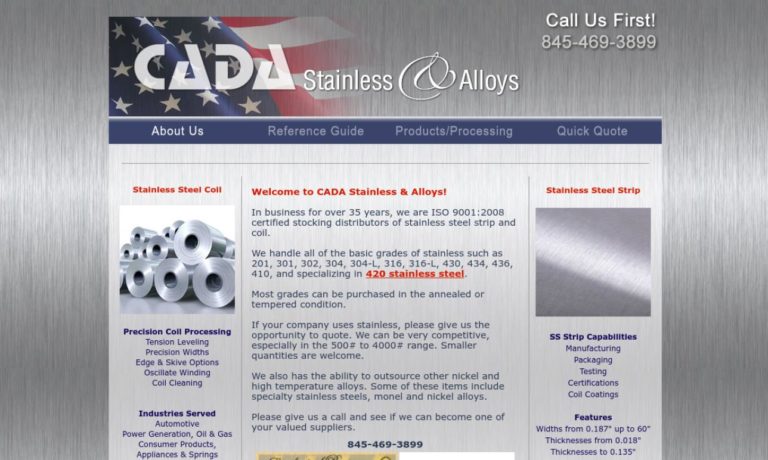
As stainless steel producers, Source 21 specializes in hard-to-find materials. We produce all tempers plus commercial and exotic stainless steel. You choose from our inventory or we can custom produce to your needs. An ISO 9001:2000 registered company; we maintain comprehensive inventories at our various US processing locations to facilitate quick shipments. Check out our website!
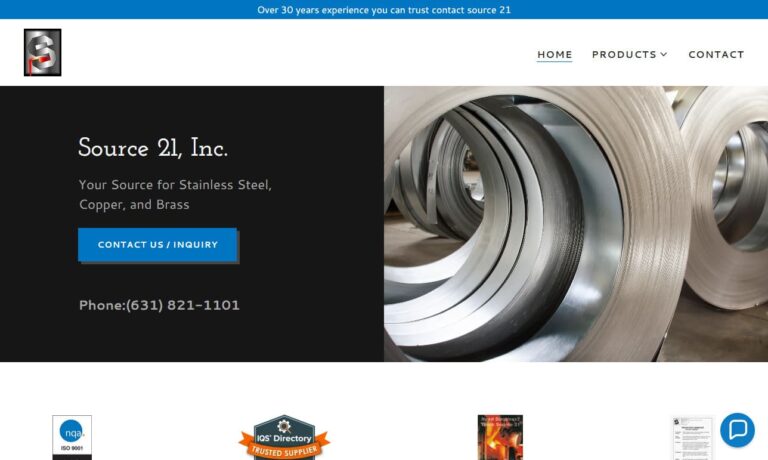
Welded Tubes has a variety of tube shapes and tube sizes: squares, rectangles, hexes, octagons, etc., including many metric OD's. We make automotive, retail, safety, and medical tubing. Our steel tubing is suitable for any applications, including for high-end consumer products; it is high strength, made to tight tolerances, and aesthetically pleasing.
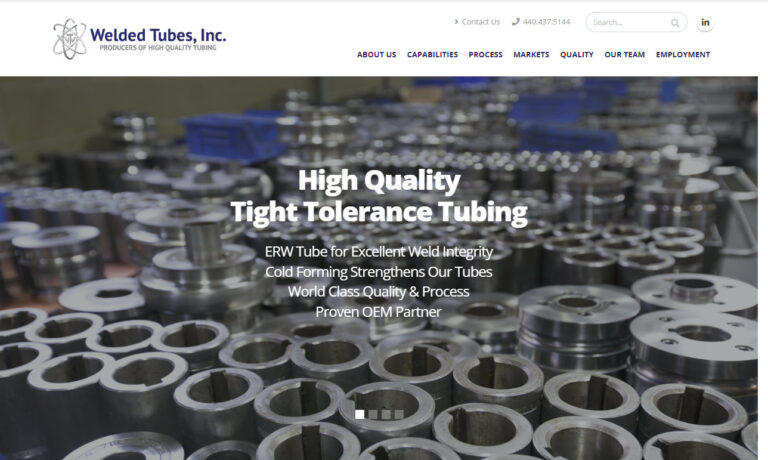
Welcome to Appleton Stainless Incorporated, where we pride ourselves on our expertise in providing high-quality stainless steel tubing solutions to meet the diverse needs of our clients. With years of experience and a commitment to excellence, we have established ourselves as leaders in the industry, delivering innovative products and services tailored to exceed our clients' expectations. Our...
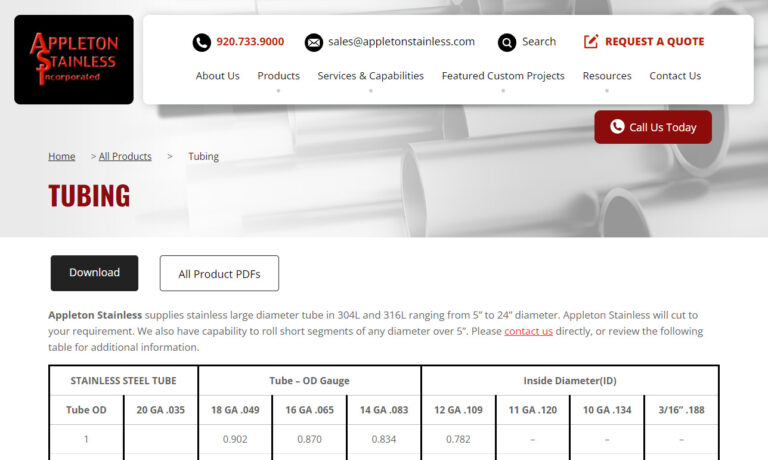
You’ll find the finest structural and ornamental polished stainless steel tubing at Century Tube Corporation! This stainless tubing manufacturer solves a broad range of stainless steel tube applications in a variety of industries. Discover the complete capabilities of one of the oldest and strongest stainless steel companies!
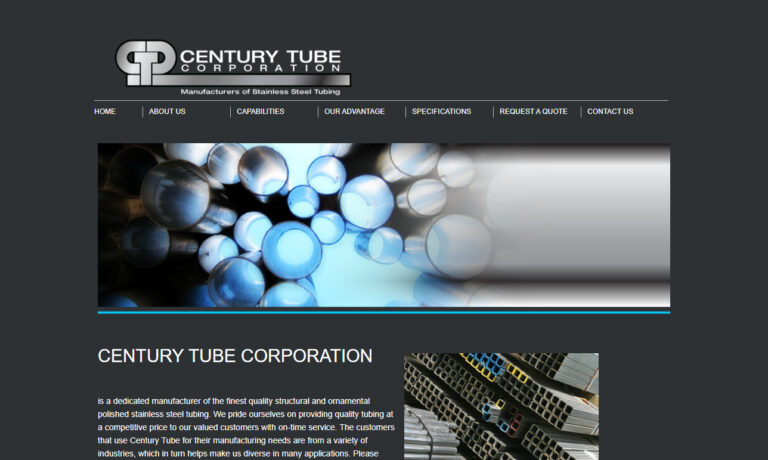
More Stainless Steel Tubing Manufacturers
Stainless steel tubing, made from a high-chromium, corrosion-resistant alloy, is widely used across industries for its superior mechanical properties and durability. The manufacturing process starts with stainless steel billets or strips, which are heated and formed into cylindrical shapes. These shapes are then processed through techniques like hot or cold rolling, welding, or seamless extrusion to achieve specific dimensions and specifications.
Available in various sizes, wall thicknesses, and grades, stainless steel tubing can meet diverse application needs. Dimensions are typically defined by outside diameter (OD), inside diameter (ID), and wall thickness, with round, square, and rectangular shapes available, though round tubing is the most common.
Stainless steel piping and stainless steel tubing have many similarities, yet they differ in key aspects. Stainless steel piping consists of a network of pipes designed for the transport of liquids or gases. It finds application across various sectors, including oil and gas, petrochemical, chemical processing, food and beverage, pharmaceuticals, and plumbing. Built to handle high-pressure environments, stainless steel piping systems are crucial for applications where dependable performance and safety are paramount.
Stainless steel piping and tubing differ primarily in size, standards, joining methods, and applications. Piping, with larger diameters and thicker walls, is used for high-volume fluid or gas transport and adheres to strict standards like ASME B31.3 or API 5L. It often employs welded connections to handle high pressure. In contrast, tubing, with smaller dimensions, is used for applications like instrument lines or heat exchangers and follows less stringent standards such as ASTM A269 or ASTM A554. It can be joined using various methods including welding, compression fittings, or mechanical connections, and is suited for smaller-scale or decorative uses.
Stainless steel piping and tubing both offer corrosion resistance and durability due to their material composition. Piping, typically larger and manufactured to specific industry standards, is used for high-pressure applications. In contrast, tubing is smaller, used in diverse applications, and suitable for transporting fluids or gases at lower volumes or pressures.
History of Stainless Steel Tubing
The connection between tubing and piping can be seen through the history of steel tubing. Civilizations have long developed tubing systems for transporting materials. The Egyptians, Chinese, and Greeks created early piping for resources like water, using materials such as copper, bamboo, clay, stone, and bronze. The Romans and Persians built notable aqueducts, while some Europeans used lead pipes in the first century. In 1652, Boston used hollow logs for its waterworks. Later, redwood trees in the American West proved more resistant to fungi and corrosion than metal pipes. Metal tubing was initially used for fluid transport but became crucial in the firearms industry during the modern era.
Metal tubing advanced significantly during the Industrial Revolution. In 1815, Scottish engineer William Murdock used old musket barrels to create a coal lamp system in London, demonstrating the need for better metal tubing. The Bessemer process, introduced in the mid-nineteenth century, revolutionized steel production, allowing industrial mills to form iron and steel tubes. Early welded tubes, however, were prone to failure under stress. From 1840, seamless tubes were produced by drilling and drawing billets, a method improved in 1888 by casting billets around fireproof cores. The development of stainless steel in 1912 further enhanced tubing technology. Today, metal tubing and piping are vital for structural and transportation roles in industrialized societies.
Materials of Stainless Steel Tubing
Stainless steel selection for piping and tubing depends on application-specific requirements. Key factors include corrosion resistance, mechanical properties, temperature range, pressure rating, and environmental conditions. Common stainless steel grades for these applications include:
Austenitic stainless steels, such as grades 304 (UNS S30400) and 316 (UNS S31600), are highly valued for their remarkable corrosion resistance, excellent mechanical strength, and considerable ductility. These attributes make them essential in numerous applications, especially in piping and tubing. They are extensively utilized in diverse industries, including chemical processing, food and beverage, pharmaceuticals, and plumbing, where reliability and performance are paramount.
Duplex stainless steels, including grades 2205 (UNS S32205) and 2507 (UNS S32750), are characterized by a unique microstructure that combines austenite and ferrite phases. This distinctive structure provides duplex stainless steels with enhanced strength and superior resistance to pitting and crevice corrosion compared to austenitic steels. Consequently, they are the preferred choice for challenging environments, such as offshore oil and gas platforms, chemical processing plants, and desalination facilities, where high strength and corrosion resistance are essential.
Ferritic stainless steels, including grade 430 (UNS S43000), are renowned for their superior resistance to stress corrosion cracking and their capability to endure high-temperature scaling. While their corrosion resistance is less robust than that of austenitic and duplex stainless steels, they excel in applications that require substantial high-temperature strength and resilience in specific environments. This type of stainless steel is frequently utilized in automotive exhaust systems and various industrial settings, where its distinctive properties are particularly beneficial.
Martensitic stainless steels, such as grade 410 (UNS S41000), are distinguished by their impressive strength, hardness, and wear resistance. These steels offer moderate corrosion resistance and are ideally suited for applications where durability and robustness are critical. Common uses include cutlery, pump components, and certain piping systems, where the high strength and toughness of martensitic stainless steels ensure reliable performance in demanding conditions.
Selecting the appropriate stainless steel grade for piping and tubing requires consideration of factors such as fluid or gas type, operating temperature, pressure conditions, and material compatibility. Consulting engineering specifications, industry standards, and materials engineers’ expertise is essential in determining the most suitable grade for specific applications. Although some stainless steel grades overlap in use, certain grades are more commonly associated with either piping or tubing due to their specific properties and applications. Here are a few examples:
Stainless Steels Commonly Used for Piping:
Stainless Steel 304/304L (UNS S30400/S30403) is an austenitic stainless steel renowned for its excellent corrosion resistance, robust mechanical properties, and ease of fabrication. These characteristics make it an ideal choice for piping systems across a diverse range of industries. Whether in chemical processing, food and beverage production, or general manufacturing, Stainless Steel 304/304L provides reliable performance and versatility.
Stainless Steel 321 (UNS S32100) is a stabilized austenitic stainless steel that includes titanium, enhancing its resistance to intergranular corrosion. This specific composition makes it particularly suitable for high-temperature applications. It is commonly employed in piping systems for heat exchangers, furnace components, and other environments where elevated temperatures are a factor. The durability and stability of Stainless Steel 321 ensure its effectiveness and longevity in demanding conditions.
Stainless Steels Commonly Used for Tubing:
Stainless Steel 304/304L (UNS S30400/S30403) is renowned for its widespread application in both piping and tubing, particularly in environments where corrosion resistance is paramount. This grade’s exceptional durability makes it a preferred choice for instrument lines, heat exchangers, and architectural elements, ensuring reliable performance in diverse conditions.
Similarly, Stainless Steel 316/316L (UNS S31600/S31603) is highly valued for its versatility and extensive use in piping and tubing. Its remarkable corrosion resistance sets it apart, making it the material of choice for industries such as chemical processing, pharmaceuticals, and food and beverage. This grade’s ability to withstand harsh environments ensures long-lasting reliability and safety in critical applications.
Stainless Steel 409 (UNS S40900), a ferritic stainless steel, is primarily utilized in automotive exhaust systems. Its excellent high-temperature scaling resistance and robust mechanical properties at elevated temperatures make it an ideal material for this application. The durability and performance of Stainless Steel 409 ensure that it meets the demanding requirements of automotive industries, providing reliable service in high-stress environments.
These examples represent commonly used stainless steel grades, but the actual selection depends on specific project requirements, industry standards, and expert advice. Each application has unique demands, so choosing the appropriate stainless steel grade for piping or tubing should consider factors like corrosion resistance, mechanical properties, temperature range, and environmental conditions.
Stainless Steel Tubing Production
Stainless steel tubing and piping can be crafted as either welded or seamless varieties, each with its unique manufacturing method. Welded steel tubes are formed by merging and sealing the edges of raw steel, while seamless steel tubes are produced through stretching or drawing techniques. In producing welded stainless steel pipes, manufacturers begin with hot-rolled or cold-rolled steel coils or strips. These coils are shaped into a rounded, tubular form as they pass through grooved rollers. Welding electrodes then join the processed coils along a seam using electrical resistance welding. Post-welding, residue is typically cleaned both inside and out. The tube is subsequently resized to its final dimensions by two semicircular rollers. This welding method ensures high precision and eliminates the necessity for secondary processes.
Manufacturers create seamless tubing and pipes using a method called drawing, akin to extrusion. Unlike traditional hot metal extrusion, which uses high temperatures and a die to push molten metal through, drawing involves pulling a solid stainless-steel billet over a bullet-shaped piercing rod with tensile force. This process forms a hollow, seam-free cylinder. Drawing is usually conducted at ambient temperature but can be performed at higher temperatures to minimize stress on hollow sections. The production of seamless tubes concludes at a reducing mill, where the tube is temporarily shaped into an oval for final processing before being reshaped by a rotary sizer. The main benefit of seamless stainless-steel tubing and piping is its enhanced resistance to splitting, enabling it to endure greater pressure.
Metal turning, or spin forming, involves rotating a flat round disc of sheet metal on a spinning CNC lathe. This method offers low production costs and reduces material waste. However, it is limited to producing concentric shapes.
Customizing Stainless Steel Tubing
The versatility of stainless steel tubing has led to numerous variations, particularly in size. Generally, pipes are larger than tubes, with pipes being crucial for transport applications, while tubes are essential for structural uses. Tubes can be extremely small, such as hypodermic tubing for needles and syringes, which range from .002” to .239” in internal diameter and .005” to .259” in external diameter. These sizes have specific gauge sizes based on their internal and external diameters.
Stainless steel tubing is classified into two main types: welded and seamless. Welded tubing, also known as electric resistance welded (ERW) tubing, is one type. Other notable variations include stainless steel square tubing, which offers pressure resistance, and corrugated stainless steel tubing, which is flexible and covered with a PVC layer. Although not a type of tubing, pipe fittings are essential attachments that facilitate various connections, such as those between standard tubes, threaded nipple tubes, elbows, tees, and reducers. Pipe fittings are sealed with plugs and caps to contain their contents.
Types of Stainless Steel Tubing
The versatility of stainless steel tubing has led to numerous variations, particularly in size. Generally, pipes are larger than tubes, with pipes being crucial for transport applications, while tubes are essential for structural uses. Tubes can be extremely small, such as hypodermic tubing for needles and syringes, which range from .002” to .239” in internal diameter and .005” to .259” in external diameter. These sizes have specific gauge sizes based on their internal and external diameters.
Stainless steel tubing is classified into two main types: welded and seamless. Welded tubing, also known as electric resistance welded (ERW) tubing, is one type. Other notable variations include stainless steel square tubing, which offers pressure resistance, and corrugated stainless steel tubing, which is flexible and covered with a PVC layer. Although not a type of tubing, pipe fittings are essential attachments that facilitate various connections, such as those between standard tubes, threaded nipple tubes, elbows, tees, and reducers. Pipe fittings are sealed with plugs and caps to contain their contents.
Applications of Stainless Steel Tubing
Stainless steel tubing is indispensable across a multitude of industries, celebrated for its superior mechanical properties, exceptional corrosion resistance, and remarkable adaptability. In industrial applications, this tubing is paramount for the efficient transport of fluids and gases within chemical processing plants, oil and gas refineries, and power generation facilities. It is also a critical component in heat exchangers, condensers, and boilers, where its ability to facilitate effective heat transfer is essential.
The automotive sector heavily relies on stainless steel tubing for various components, including exhaust systems, fuel delivery systems, and hydraulic lines. Its durability and resistance to high temperatures and corrosion make it the material of choice for these demanding applications. In the realm of architecture and construction, stainless steel tubing is favored for handrails, balustrades, and structural supports, offering both robustness and an appealing aesthetic.
In the medical field, stainless steel tubing is highly valued for its biocompatibility, making it ideal for surgical instruments, catheters, and implantable devices. Its hygienic properties and resistance to biological reactions ensure safety and reliability in medical applications. Beyond these sectors, stainless steel tubing plays a vital role in food and beverage production, pharmaceutical manufacturing, aerospace, telecommunications, and numerous research and development projects.
The versatility, reliability, and corrosion resistance of stainless steel tubing make it an unparalleled choice for various demanding industries. Its ability to meet stringent requirements and perform consistently under diverse conditions underscores its importance and widespread utilization across different fields.
Considerations of Stainless Steel Tubing
Stainless steel tubing, while advantageous, presents several considerations during its production and use. It is relatively costly due to complex manufacturing processes and high raw material prices, particularly for specialty grades. This complexity also results in longer lead times and higher production costs. Additionally, stainless steel tubing production is energy-intensive and may generate waste that requires proper disposal and management. Selecting the appropriate stainless steel grade is crucial to avoid application issues. Regular cleaning and maintenance are necessary to maintain its appearance and corrosion resistance. Despite these challenges, stainless steel tubing remains popular for its durability, versatility, and corrosion resistance, and with proper measures, these challenges can be effectively managed.
Stainless Steel Tubing Manufacturing
Manufacturers of stainless steel tubing focus on optimizing their production processes to enhance efficiency and reduce costs while maintaining high quality. By employing innovative techniques and technologies, they streamline manufacturing and minimize material waste. Advancements in metallurgy and alloy development allow for the creation of stainless steel tubing with superior properties, such as enhanced corrosion resistance and cost-effectiveness, tailored for specific applications.
Manufacturers are enhancing the stainless steel tubing production process by integrating sustainable practices. They are investing in energy-efficient technologies, utilizing renewable energy sources, and implementing advanced waste management systems. Emphasis is placed on reducing emissions, recycling materials, and applying eco-friendly coatings and treatments to ensure an environmentally responsible production process.
Manufacturers enhance the stainless steel tubing production process by offering comprehensive technical support and guidance. They collaborate with engineers, architects, and industry experts to understand specific requirements and recommend the most suitable stainless steel grade for each application. This approach ensures optimal performance, longevity, and cost-effectiveness throughout the production process.
Manufacturers enhance the stainless steel tubing production process by developing advanced surface treatments, coatings, and finishes. These innovations significantly improve the tubing’s durability and ease of maintenance, streamlining cleaning procedures and increasing cost-efficiency throughout its lifespan.
In summary, manufacturers of stainless steel tubing focus on optimizing production processes, developing innovative alloys, implementing sustainable practices, and providing material selection support. They also offer solutions to simplify maintenance and cleaning. These efforts enhance the overall performance, affordability, and sustainability of stainless steel tubing, reinforcing its position as a reliable and versatile material for various industries.
Benefits of Stainless Steel Tubing
Stainless steel tubing is renowned for its numerous advantages, making it a preferred material in many industries. Its exceptional corrosion resistance protects it from rust, stains, and harsh environmental conditions, ensuring both durability and longevity. This robust material can endure high-pressure scenarios, mechanical stresses, and significant temperature fluctuations without compromising its structural integrity.
Furthermore, the non-porous, smooth surface of stainless steel tubing facilitates easy cleaning, promoting hygiene and sterility—essential for applications that require strict cleanliness standards. Its versatility is highlighted by the availability of various shapes, sizes, and grades, which accommodate a wide range of applications.
In addition to its functional benefits, stainless steel tubing boasts aesthetic appeal, exceptional resistance to extreme temperatures, and is recyclable, enhancing its sustainability credentials. This combination of durability, corrosion resistance, cleanliness, versatility, and environmental friendliness makes stainless steel tubing an excellent choice for both industrial and architectural applications.
Stainless Steel’s Potential Future
The future of stainless steel tubing is promising, with advancements in manufacturing, materials science, and engineering enhancing its performance. New alloys with better corrosion resistance, strength, and temperature tolerance will be developed. Manufacturers will optimize production for efficiency, cost reduction, and minimal environmental impact, while digitalization and automation will improve precision and consistency.
Rising demand is expected from renewable energy, electric vehicles, and infrastructure sectors, which need reliable, sustainable materials for energy storage, hydrogen transport, and water treatment. The architectural and design sectors will also continue to use stainless steel tubing for its aesthetic and versatile qualities.
Choosing the Right Stainless Steel Tubing Manufacturer
For the best results when purchasing stainless steel tubing, compare various manufacturers using our directory. Each manufacturer has a detailed business profile showcasing their expertise and capabilities, along with a contact form for inquiries or quotes. Use our patented website previewer to quickly understand each company’s specialties. Then, utilize our streamlined RFQ form to contact multiple manufacturers efficiently.



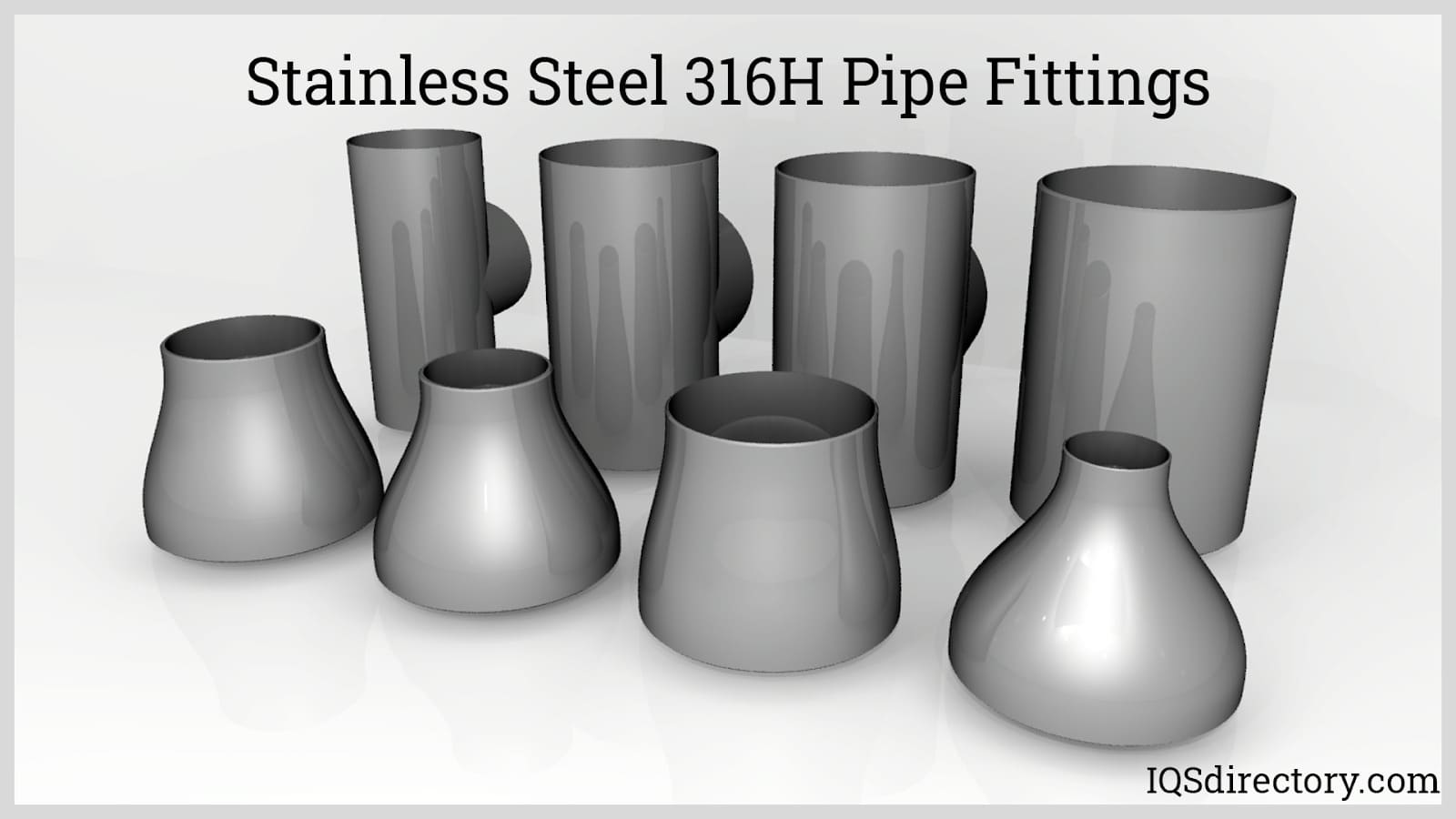
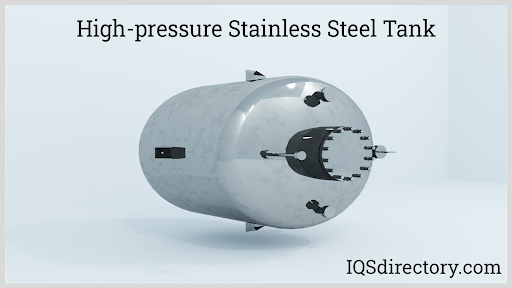
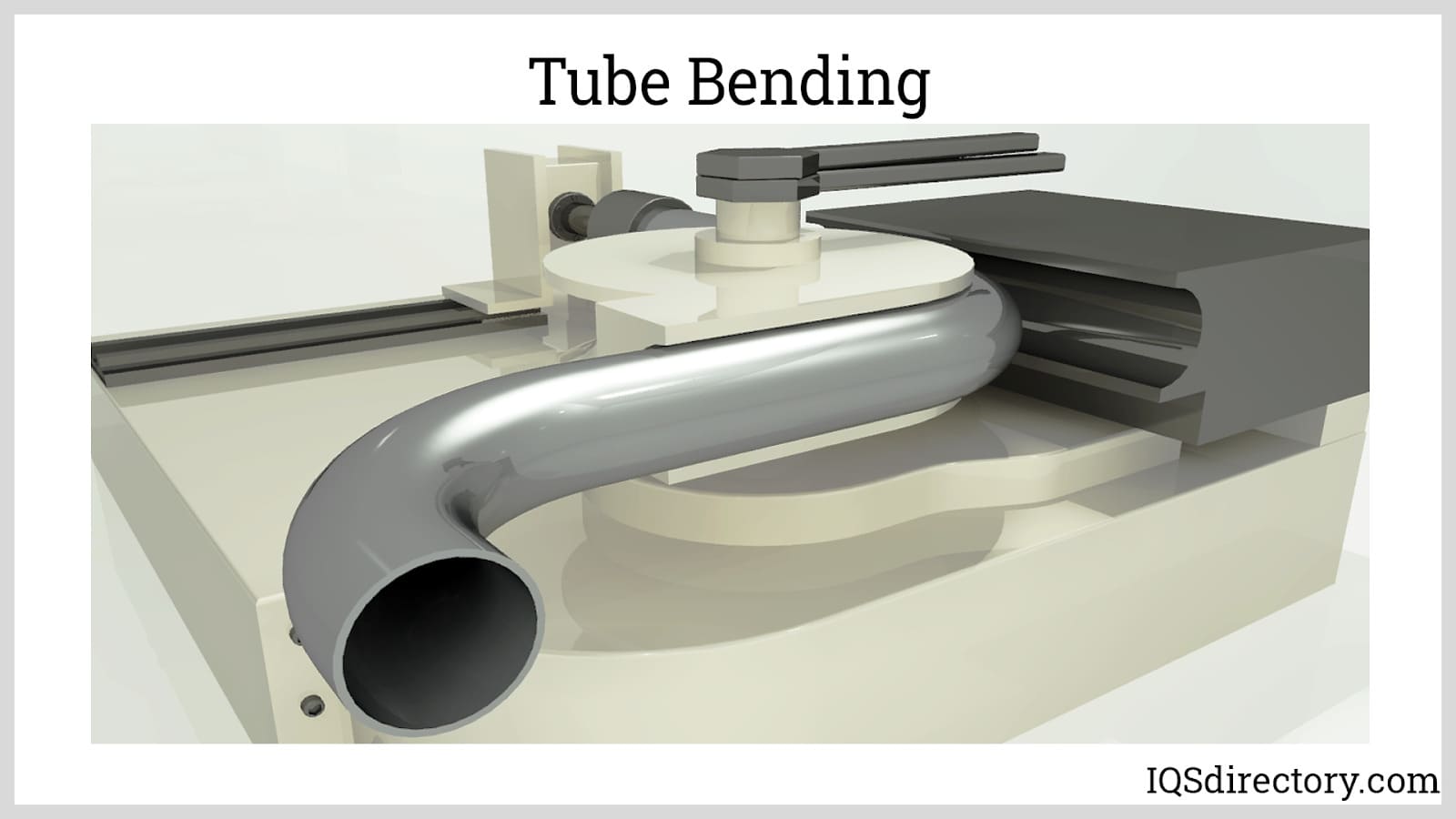
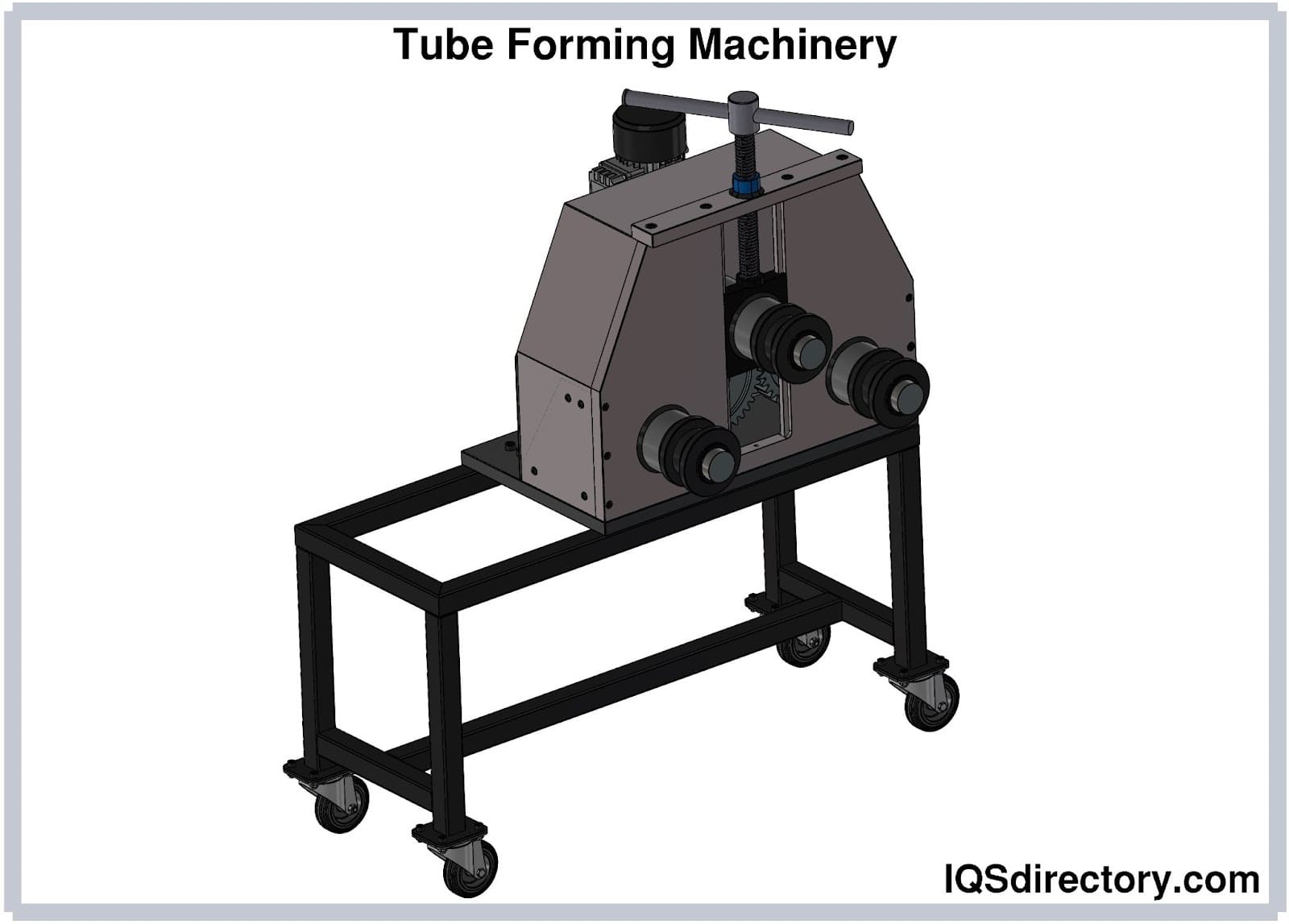
 Alloy Suppliers
Alloy Suppliers Aluminum
Aluminum Aluminum Extrusions
Aluminum Extrusions Copper-Brass-Bronze
Copper-Brass-Bronze Magnets
Magnets Nickel
Nickel Stainless Steel
Stainless Steel Stainless Steel Tubing
Stainless Steel Tubing Steel Service Centers
Steel Service Centers Titanium
Titanium Tungsten
Tungsten Wire Rope
Wire Rope Castings & Forgings
Castings & Forgings Bulk Material Handling
Bulk Material Handling Electrical & Electronic Components
Electrical & Electronic Components Flow Instrumentation
Flow Instrumentation Hardware
Hardware Material Handling Equipment
Material Handling Equipment Metal Cutting Services
Metal Cutting Services Metal Forming Services
Metal Forming Services Metal Suppliers
Metal Suppliers Motion Control Products
Motion Control Products Plant & Facility Equipment
Plant & Facility Equipment Plant & Facility Supplies
Plant & Facility Supplies Plastic Molding Processes
Plastic Molding Processes Pumps & Valves
Pumps & Valves Recycling Equipment
Recycling Equipment Rubber Products & Services
Rubber Products & Services